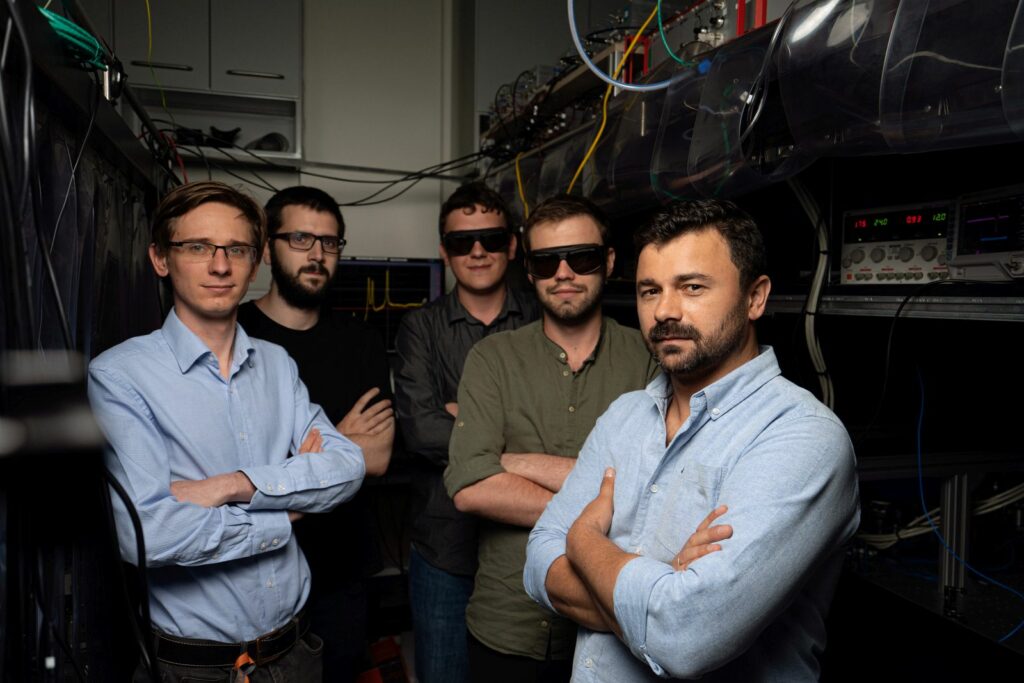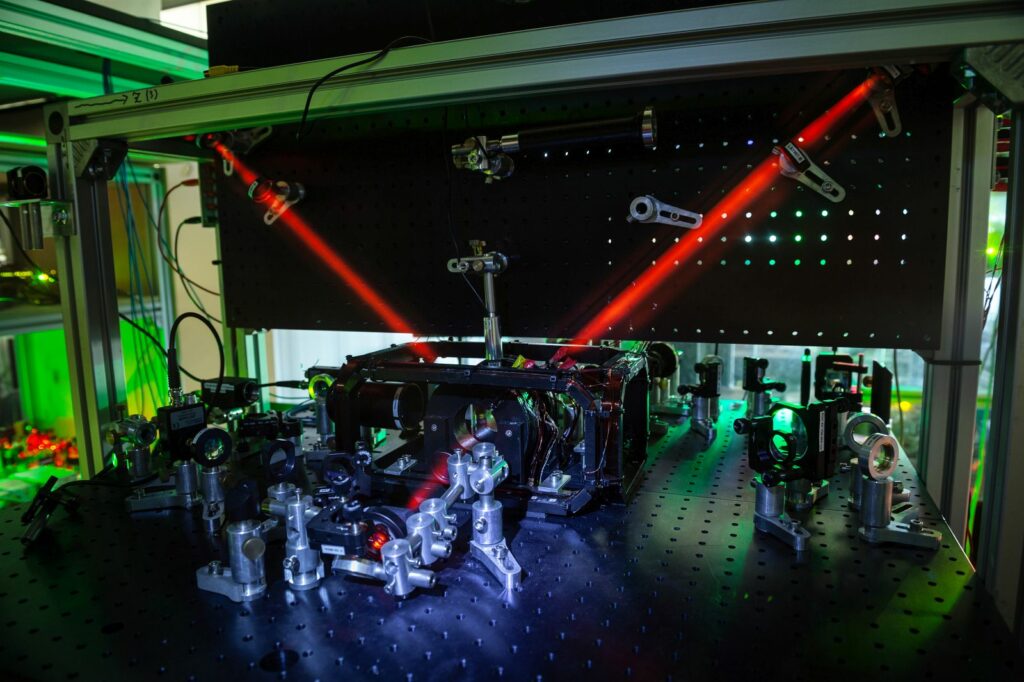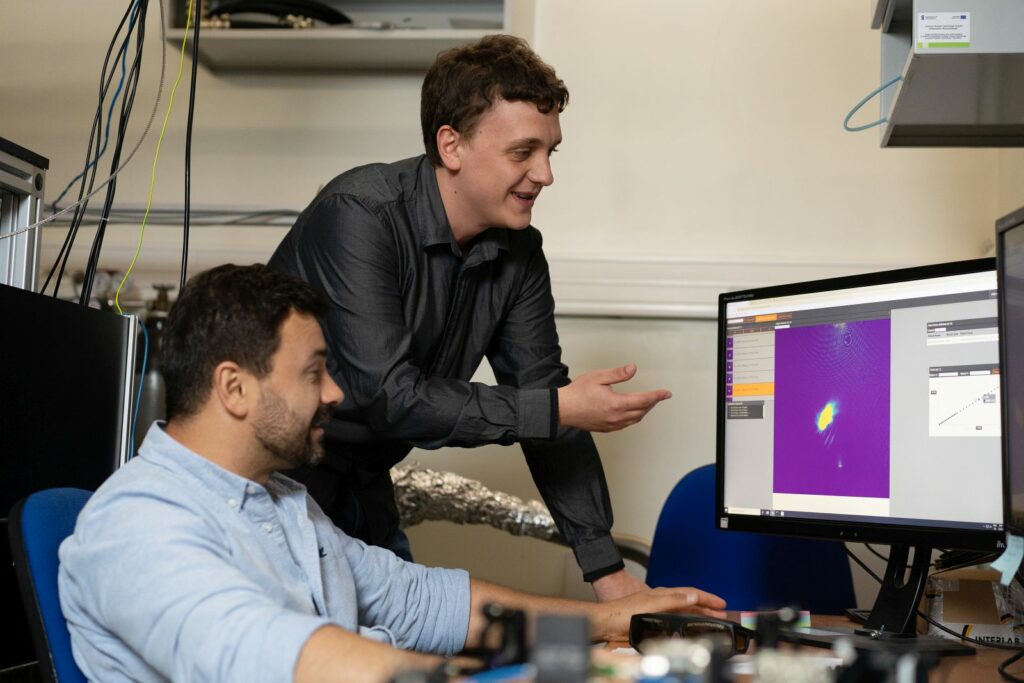Ultracold Quantum Gases
The team deals with topics related to ultra-cold quantum gases. In the experiments caesium and potassium atoms are used, which are ultimately cooled to temperatures well below 1 microkelvin. Under these conditions, it is possible to conduct experiments with Bose-Einstein condensates and quantum degenerate fermion gases, thus opening an exciting field of research on the border of quantum physics, condensed matter physics and quantum chemistry. In our research, we also construct unique research equipment, thus combining basic research with the development of new technologies that have a chance to have important applications.

Main research areas:
Laser cooling of caesium and potassium for quantum degeneration

We use Raman cooling in an optical network to increase the density of atoms in the phase space using only optical methods. In this approach, cooling is a more than an order of magnitude faster than in evaporative cooling approaches. Developed experimental methods will allow efficient production of ultra-cold particles trapped in optical networks and, thus, they will contribute to the onset of a new generation of analog quantum simulators for the simulation of properties of the strongly interacting matter.
Boson-fermion mixture of potassium isotopes
The ultra-cold mixture of potassium-39 and potassium-40, which we have obtained, allows us to attempt to observe the p-wave superfluidity in quantum gases, thus it gives us a tool to study properties of exotic superconductors. We expect that this achievement will contribute to a better understanding of existing theoretical models describing this phenomenon and will guide the development of these models, allowing us to develop realistic systems of technological significance.

Atomic Interferometry
We also work on a construction of a mobile station for atomic interferometry. The use of matter waves of ultra-cold atoms will allow us to construct a gradiometer enabling absolute measurement of gravitational field intensity. Thus, the device will be a sensor, which will not require any calibration and allow the detection of objects below the surface of the earth, such as minerals, abandoned shafts or military objects. With absolute measurements, the device will enable inertial navigation using gravitational field maps without the need for the use of the GPS.

Contact
Group leader: dr Mariusz Semczuk, Mariusz.Semczuk@fuw.edu.pl